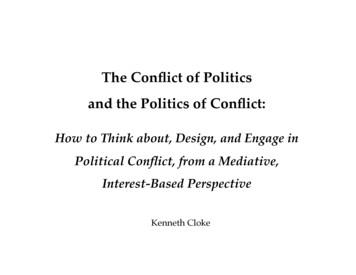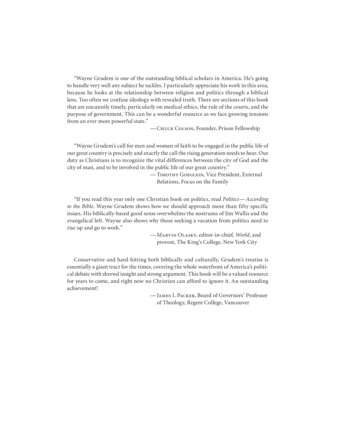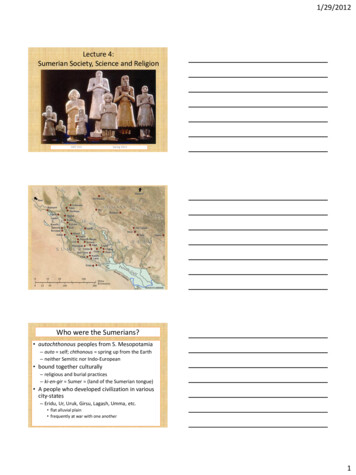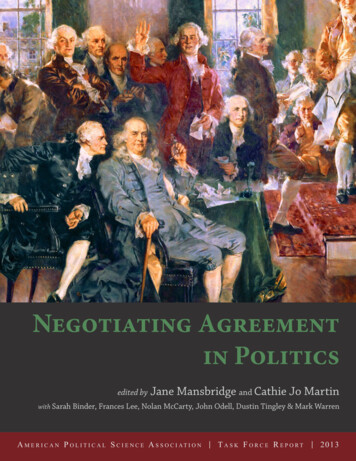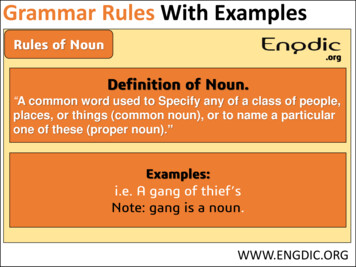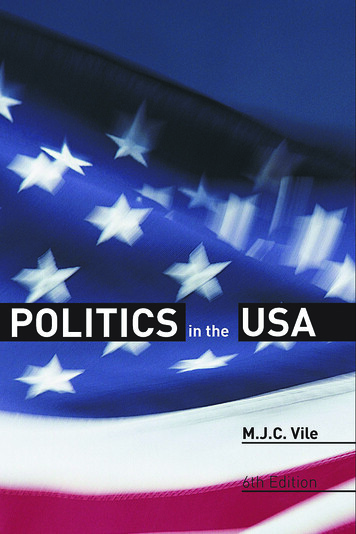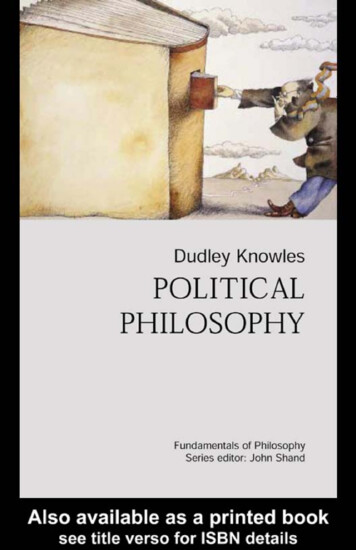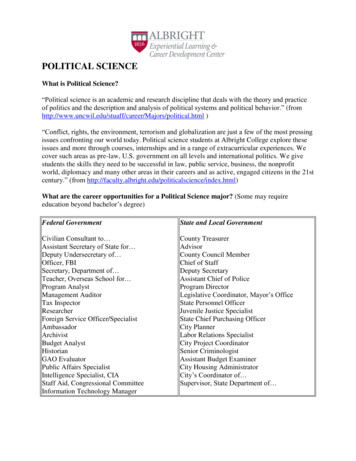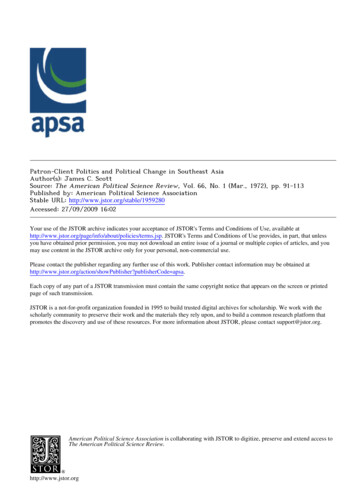
Transcription
Patron-Client Politics and Political Change in Southeast AsiaAuthor(s): James C. ScottSource: The American Political Science Review, Vol. 66, No. 1 (Mar., 1972), pp. 91-113Published by: American Political Science AssociationStable URL: http://www.jstor.org/stable/1959280Accessed: 27/09/2009 16:02Your use of the JSTOR archive indicates your acceptance of JSTOR's Terms and Conditions of Use, available rms.jsp. JSTOR's Terms and Conditions of Use provides, in part, that unlessyou have obtained prior permission, you may not download an entire issue of a journal or multiple copies of articles, and youmay use content in the JSTOR archive only for your personal, non-commercial use.Please contact the publisher regarding any further use of this work. Publisher contact information may be obtained herCode apsa.Each copy of any part of a JSTOR transmission must contain the same copyright notice that appears on the screen or printedpage of such transmission.JSTOR is a not-for-profit organization founded in 1995 to build trusted digital archives for scholarship. We work with thescholarly community to preserve their work and the materials they rely upon, and to build a common research platform thatpromotes the discovery and use of these resources. For more information about JSTOR, please contact support@jstor.org.American Political Science Association is collaborating with JSTOR to digitize, preserve and extend access toThe American Political Science Review.http://www.jstor.org
Patron-ClientPolitics andPolitical Change in Southeast AsiaJAMES C. SCOTTUniversity of Wisconsin, MadisonThe analysis presented here is an effort toelaborate the patron-client model of association,developed largely by anthropologists, and todemonstrate its applicability to political actionin Southeast Asia. Inasmuch as patron-clientstructures are not unique to Southeast Asia butare much in evidence particularly in LatinAmerica, in Africa and in the less developedportions of Europe, the analysis may possiblyhave more general value for an understandingof politics in less developed nations.Western political scientists trying to come togrips with political experience in the ThirdWorld have by and large relied on either (orboth) of two models of association and conflict. One model is the horizontal, class modelof conflict represented most notably by Marxistthought. It has had some value in explainingconflict within the more modern sector of colonial nations and in analyzing special cases inwhich rural social change has been so cataclysmic as to grind out a dispossessed, revolutionary agrarian mass. By and large, however, itsoverall value is dubious in the typical nonindustrial situation where most political groupingscut vertically across class lines and where evennominally class-based organizations like tradeunions operate within parochial boundaries ofethnicity or religion or are simply personal vehicles. In a wider sense, too, the fact that classcategories are not prominent in either oral orwritten political discourse in the Third Worlddamages their a priori explanatory value.The second model, and one which comesmuch closer to matching the "real" categoriessubjectively used by the people being studied,emphasizes primordial sentiments (such asethnicity, language, and religion), rather thanhorizontal class ties. Being more reflective ofself-identification, the primordial model naturally helps to explain the tension and conflictthat increasingly occurred as these isolated, ascriptive groups came into contact and competed for power. Like the class model, however-although less well developed theoreticallythe primordial model is largely a conflictmodel and is of great value in analyzing hostilities between more or less corporate and ascriptive cultural groupings.' Important as suchconflict has been, it hardly begins to exhaustthe political patterns of Southeast Asia and Africa, let alone Latin America. If we are to account, say, for intra-ethnic politics or for pat,terns of cooperation and coalition buildingamong primordial groups, then the primordialmodel cannot provide us with much analyticalleverage.The need to develop a conceptual structurethat would help explain political activity thatdoes not depend solely on horizontal or primordial sentiments is readily apparent in SoutheastAsia.2 In the Philippines, for example, classanalysis can help us understand the recurrentagrarian movements in Central Luzon (e.g.,Sakdalistas and Huks) among desperate tenantsand plantation laborers; but it is of little help inexplaining how Magsaysay succeeded in weaning many rebels away from the Huks, or, moreimportant, in analyzing the normal patterns ofpolitical competition between Philippine parties. In Thailand, primordial demands may helpus discern the basis of dissident movements inNorth and Northeast Thailand, but neither primordialism nor class analysis explains the intricate pattern of the personal factions and coalitions that are at the center of oligarchic Thai' Two influential anthropologists who employ thismode of analysis arc: Clifford Gecrtz ("The Integra-tive Revolution," in Geertz, ed., Old Societies andNew States [New York: The Free Press of Glencoe,1963]); and Max Gluckman (Custom and Conflict inAfrica [Oxford: Basil and Blackwell, 1963]).2number of political studies of Southeast Asiahave dealt with factionalism or patron-client ties. Themost outstanding is Carl Lande's Leaders, Factions,and Parties: the Structure of Philippine Politics, Monograph No. 6 (New Haven: Yale University-Southeast Asia Studies, 1964). For the Thai political system, Fred W. Riggs' Thailand: The Modernization ofa Bureaucratic Polity (Honolulu: East-West CenterPress, 1966) and David A. Wilson's Politics in Thailand (Ithaca: Cornell University Press, 1962) pursuea similar line of analysis; and for Burma, see LucianW. Pye, Politics, Personality, and Nation-Building:Burma's Search for Identity (New Haven: Yale University Press, 1962). Some notable attempts to docomparable studies outside Southeast Asia are: ColinLeys, Politicians and Policies: An Essay on Politics inAcholi Uganda 1962-1965 (Nairobi: East Africa Publishing House, 1967); Myron Weiner, Party-Buildingin a New Nation: The Indian National Congress (Chicago: University of Chicago Press, 1967); Paul R.Brass, Factional Politics in an Indian State (Berkeleyand Los Angeles: University of California Press,1965); Frederick G. Bailey, Politics and SocialChange: Orissa in 1959 (Berkeley and Los Angeles:University of California Press, 1963).91
92The American Political Science Reviewpolitics. The almost perpetual conflicts betweenthe central Burman state and its separatist hillpeoples and minorities are indeed primordial,communal issues, but communalism is of nouse in accounting for the intra-Burman struggles between factions within the Anti-FascistPeople's Freedom League (AFPFL) or, later,within the military regime. Ethnicity and classdo carry us far in explaining racial hostilitiesand intra-Chinese conflict in Malaya, but theyare less helpful when it comes to intra-Malaypolitics or to interracial cooperation at the topof the Alliance party.3As these examples indicate, when we leavethe realm of class conflict or communalism,we are likely to find ourselves in the realm ofinformal power groups, leadership-centeredcliques and factions, and a whole panoply ofmore or less instrumental ties that characterizemuch of the political process in Southeast Asia.The structure and dynamics of such seeminglyad hoc groupings can, I believe, be best understood from the perspective of patron-client relations. The basic pattern is an informal clusterconsisting of a power figure who is in a positionto give security, inducements, or both, and hispersonal followers who, in return for such benefits, contribute their loyalty and personal assistance to the patron's designs. Such vertical patterns of patron-client linkages represent an important structural principle of Southeast Asianpolitics.Until recently the use of patron-client analysis has been the province of anthropologists,who found it particularly useful in penetratingbehind the often misleading formal arrangements in small local communities where interpersonal power relations were salient. Termswhich are related to patron-client structuresin the anthropological literature-including"clientelism," "dyadic contract," "personal network," "action-set"-reflect an attempt on thepart of anthropologists to come to grips withthe mosiac of nonprimordial divisions. Informal though such networks are, they are built,they are maintained, and they interact in waysthat will permit generalization.Although patron-client analysis provides asolid basis for comprehending the structure anddynamics of nonprimordial cleavages at thelocal level, its value is not limited to villagestudies. Nominally modern institutions such asbureaucracies and political parties in Southeast3 Class as well as ethnicity is relevant to MalayChinese conflict, since the different economic structureof each community places them in conflict. Many arural Malay experiences the Chinese not only as porkeating infidels but as middlemen, money lenders,shopkeepers, etc.-as the cutting edge of the capitalistpenetration of the countryside.Vol. 66Asia are often thoroughly penetrated by informal patron-client networks that undermine theformal structure of authority. If we are tograsp why a bureaucrat's authority is likely todepend more on his personal following and extrabureaucratic connections than on his formalpost, or why political parties seem more like adhoc assemblages of notables together with theirentourages than arenas in which established interests are aggregated, we must rely heavily onpatron-client analysis. The dynamics of personal alliance networks are as crucial in theday-to-day realities of national institutions as inlocal politics; the main difference is simply thatsuch networks are more elaborately disguisedby formal facades in modern institutions.In what follows, I attempt to clarify what patron-client ties are, how they affect politicallife, and how they may be applied to the dynamics of Southeast Asian politics. After 1)defining the nature of the patron-client link anddistinguishing it from other social ties, the paper 2) discriminates among different varietiesof patron-client bonds and thereby establishessome important dimensions of variation, and3) examines both the survival of and the transformations in patron-client links in SoutheastAsia since colonialism and the impact of majorsocial changes (such as the growth of markets,the expanded role of the state, and so forth) onthe content of these ties.I. The Nature of Patron-Client TiesThe Basis and Operation of Personal Exchange.While the actual use of the terms "patron" and"client" is largely confined to the Mediterranean and Latin American areas, comparablerelationships can be found in most cultures andare most strikingly present in preindustrial naextions. The patron-client relationship-anchange relationship between roles-may be defined as a special case of dyadic (two-person)ties involving a largely instrumental friendshipin which an individual of higher socioeconomicstatus (patron) uses his own influence and resources to provide protection or benefits, orboth, for a person of lower status (client) who,for his part, reciprocates by offering generalsupport and assistance, including personal services, to the patron.44There is an extensive anthropological literaturedealing with patron-client bonds which I have reliedon in constructing this definition. Some of the mostuseful sources are: George M. Foster, "The DyadicContract in Tzintzuntzan: Patron-Client Relationship," American Anthropologist, 65 (1963), 12801294; Eric Wolf, "Kinship, Friendship, and PatronClient Relations," in Michael Banton, ed., The SocialAnthropology of Complex Societies, Association ofApplied Social Anthropology Monograph #4 (Lon-
1972Patron-Client Politics and Political Change in Southeast AsiaIn the reciprocity demanded by the relationship each partner provides a service that is valued by the other. Although the balance of benefits may heavily favor the patron, some reciprocity is involved, and it is this quality which,as Powell notes, distinguishes patron-clientdyads from relationships of pure coercion orformal authority that also may link individualsof different status.5 A patron may have somecoercive power and he may also hold an officialposition of authority. But if the force or authority at his command are alone sufficient toensure the compliance of another, he has noneed of patron-client ties which require somereciprocity. Typically, then, the patron operatesin a context in which community norms andsanctions and the need for clients require atleast a minimum of bargaining and reciprocity;the power imbalance is not so great as to permita pure command relationship.Three additional distinguishing features ofpatron-client links, implied by the definition,merit brief elaboration: their basis in inequality, their face-to-face character, and their diffuse flexibility. All three factors are most apparent in the ties between a high-status landlord and each of his tenants or sharecroppers ina traditional agrarian economy-a relationshipthat serves, in a sense, as the prototype of patron-client ties.6First, there is an imbalance in exchange between the two partners which expresses andreflects the disparity in their relative wealth,power, and status. A client, in this sense, issomeone who has entered an unequal exchangerelation in which he is unable to reciprocatefully. A debt of obligation binds him to the patron.7 How does this imbalance in reciprocitydon: Tavistock Publications, 1966), pp. 1-22; J. Campbell, Honour, Family, and Patronage (Oxford: Clarendon Press, 1964); John Duncan Powell, "Peasant Society .,"p. 412, Carl Land6, Leaders, Factions andParties .,"Alex Weingrod, "Patrons, Patronage,and Political Parties," Comparative Studies in Societyand History, 10 (July, 1968), pp. 1142-1158.3 Powell, "Peasant Society and Clientelist Politics,"American Political Science Review, 64 (June, 1970),412.6 Another comparable model, of course, is the lordvassal link of high feudalism, except in this relationship the mutual rights and obligations were of an almost formal, contractual nature. Most patron-clientties we will discuss involve tacit, even diffuse standards of reciprocity. Cf. Ruston Coulborn, ed., Feudalism in History, (Princeton: Princeton UniversityPress, 1956).In most communities this sense of obligation is astrong moral force, backed by informal communitysanctions that help bind the client to the patron. Agood account of how such feelings of debt reinforcesocial bonds in the Philippines is Frank Lynch's description of utang nla loob in Four Readings in Philip-93arise? It is based, as Peter Blau has shown inhis work, Exchange and Power in Social Life,8on the fact that the patron often is in a positionto supply unilaterally goods and services whichthe potential client and his family need fortheir survival and well being. A locally dominant landlord, for example, is frequently themajor source of protection, of security, of employment, of access to arable land or to education, and of food in bad times. Such servicescould hardly be more vital, and hence the demand for them tends to be highly inelastic; thatis, an increase in their effective cost will not diminish demand proportionately. Being a monopolist, or at least an oligopolist, for criticalneeds, the patron is in an ideal position to demand compliance from those who wish to sharein these scarce commodities.Faced with someone who can supply or deprive him of basic wants, the potential client intheory has just four alternatives to becomingthe patron's subject.9 First he may reciprocatewith a service that the patron needs badlyenough to restore the balance of exchange. Inspecial cases of religious, medical, or martialskills such reciprocation may be possible, butthe resources of the client, given his position inthe stratification, are normally inadequate to reestablish an equilibrium. A potential client mayalso try to secure the needed services elsewhere.If the need for clients is especially great, and ifthere is stiff competition among patron-suppliers, the cost of patron-controlled services willbe less.10 In most agrarian settings, substantiallocal autonomy tends to favor the growth oflocal power monopolies by officials or landedgentry. A third possibility is that clients maycoerce the patron into providing services. Although the eventuality that his clients mightturn on him may prompt a patron to meet atleast the minimum normative standards of exchange,11 the patron's local power and the abpine Values, Institute of Philippine Culture Papers,No. 2 (Quezon City: Aleneo de Manila Press, 1964).8 Peter M. Blau, Exchange and Power in Social Life(New York: Wiley, 1964), pp. 21-22. Blau's discussion of unbalanced exchange and the disparities inpower and deference such imbalance fosters is directly relevant to the basis of patron-client relationships.9These general alternatives are deduced by Blau(p. 118) and are intended to be exhaustive.'0Later, we will examine certain conditions underwhich this may actually occur.'"There is little doubt that this last resort usuallyacts as a brake on oppression. The proximate causesfor many peasant uprisings in medieval Europe during hard times often involved revocation of smallrights granted serfs by their lords-e.g., gleaningrights, use of the commons for pasturage, hunting andfishing privileges, reduction of dues in bad crop years-rights which offered a margin of security. Such re-
94The American Political Science Reviewsence of autonomous organization among hisclients make this unlikely. Finally, clients cantheoreticallydo without a patron'sservices altogether. This alternativeis remote, given the patron's control over vital services such as protection, land, and employment.Affiliatingwith a patron is neither a purelycoerced decision nor is it the result of unrestricted choice. Exactly where a particularpatron-clientdyad falls on the continuumdependson the four factors mentioned.If the client hashighly valued services to reciprocatewith, if hecan choose among competing patrons, if forceis availableto him, or if he can managewithoutthe patron's help-then the balance will bemore nearly equal. But if, as is generally thecase, the client has few coercive or exchangeresourcesto bring to bear againsta monopolistpatron whose services he desperatelyneeds, thedyad is more nearly a coercive one.12The degree of compliance a client gives hispatron is a direct function of the degree of imbalance in the exchange relationship-of howdependentthe client is on his patron'sservices.An imbalance thus creates a sense of debt orobligation on the client's part so long as itmeets his basic subsistence needs and repre-sents, for the patron,a "'store of value'-socialcredit that . . . (the patron) can draw on toobtain advantages at a later time."'13 The pa-tron's domination of needed services, enablinghim to build up savings of deference and compliance which enhance his status, and represents a capacity for mobilizing a group of supporters when he cares to. The larger a patron'sclientele and the more dependent on him theyare, the greater his latent capacity to organizevolts, even though they generally failed, served as anobject lesson to neighboring patrons. Cf. FriedrichEngels, The Peasant War in Germany (New York:International Publishers, 1966); Norman Cohn, ThePursuit of the Millennium (New York: Harper, 1961);and E. B. Hobsbawm, Primitive Rebels (New York:Norton, 1959).Exchange and Power in Social Life, pp.1Blau,119-120, makes this point somewhat differently: "Thedegree of dependence of individuals on a person whosupplies valued services is a function of the differencebetween their value and that of the second best alternative open to them." The patron may, of course,be dependent himself on having a large number ofclients, but his dependence upon any one client ismuch less than the dependence of any one client uponhim. In this sense the total dependence of patron andclient are similar, but almost all the client's dependence is focused on one individual, whereas the patron'sdependence is thinly spread (like that of an insurance company-Blau, p. 137) across many clients. Cf.Godfrey and Monica Wilson, The Analysis of SocialChange; Based on Observations in Central Africa(Cambridge: The University Press, 1945), pp. 28, 40."Blau, p. 269.Vol. 66group action. In the typical agrarian patronclient setting this capacity to mobilize a following is crucial in the competition among patronsfor regional preeminence. As Blau describes thegeneral situation,The high-status members furnish instrumentalassistance to the low-status ones in exchange fortheir respect and compliance, which help the highstatus members in their competition for a dominantposition in the group.1A second distinguishing feature of the papersonaltron-client dyad is the face-to-face,quality of the relationship. The continuing pattern of reciprocity that establishes and solidifiesa patron-client bond often creates trust andaffection between the partners. When a clientneeds a small loan or someone to intercede forhim with the authorities, he knows he can relyon his patron; the patron knows, in turn, that"his men" will assist him in his designs when heneeds them.'5 Furthermore, the mutual expectations of the partners are backed by community values and ritual.In most contexts the affection and obligationinvested in this tie between nonrelatives is expressed by the use of terms of address betweenpartners that are normally reserved for closekin. The tradition of choosing godparents inCatholic nations is often used by a family tocreate a fictive kinship tie with a patron-thegodfather thereby becoming like a brother tothe parents.'6 Whether the model of obligationestablished is father-son, uncle-nephew, or elder-younger brother, the intention is similar: toestablish as firm a bond of affection and loyaltyas that between close relatives. Thus while apatron and client are very definitely alive to theinstrumental benefits of their association, it isnot simply a neutral link of mutual advantage.On the contrary, it is often a durable bond ofgenuine mutual devotion that can survive severe testing.The face-to-face quality of the patron-clientdyad, as well as the size of the patron's resource base, limits the number of direct activeties a single patron can have.'7 Even with vastBlau, p. 127.':The classic analysis of the functions of gift-giving(prestation) in creating alliances, demonstrating superiority, and renewing obligations, is Marcel Mauss,The Gift: Forms and Functions of Exchange in Archaic Societies (Glencoe, Illinois: The Free Press ofGlencoe, 1954).16Sidney Mintz and Eric Wolf, "An Analysis ofRitual Co-Parenthood (Compadrazgo)," SouthwesternJournal of Anthropology 6 (Winter, 1948) pp. 425437.7Carl Land6, "Networks and Groups in SoutheastAsia: Some Observations on the Group Theory ofPolitics," Unpublished manuscript (March, 1970), p. 6.14
1972Patron-Client Politics and Political Change in Southeast Asiaresources, the personal contact and friendshipbuilt into the link make it highly unlikely thatan active clientele could exceed, say, one hundred persons. The total following of a given patron may be much larger than this, but normally all except 20-30 clients would be linkedto the patron through intermediaries. Since weare dealing with positive emotional ties (the ratio of "calculation" to affection may of coursevary), a leader and his immediate entouragewill be comparatively small.The third distinctive quality of patron-clientties, one that reflects the affection involved, isthat they are diffuse, "whole-person" relationships rather than explicit, impersonal-contractbonds. A landlord may, for example, have aclient who is connected to him by tenancy,friendship, past exchanges of services, the pasttie of the client's father to his father, and ritualcoparenthood. Such a strong "multiplex" relation, as Adrian Mayer terms it,"' covers a widerange of potential exchanges. The patron mayvery well ask the client's help in preparing awedding, in winning an election campaign, orin finding out what his local rivals are up to;the client may approach the patron for help inpaying his son's tuition, in filling out government forms, or in getting food or medicinewhen he falls on bad times. The link, then, is avery flexible one in which the needs and resources of the partners, and hence the nature ofthe exchange, may vary widely over time. Unlike explicit contractual relations, the very diffuseness of the patron-client linkage contributes to its survival even during rapid socialchange-it tends to persist so long as the twopartners have something to offer one another.'9Just as two brothers may assist each other in ahost of ways, patron-client partners have a relationship that may also be invoked for almostany purpose; the chief differences are the"8Adrian C. Mayer, "The Significance of QuasiGroups in the Study of Complex Societies," in MichaelBanton, ed., The Social Anthropology of Complex Societies, pp. 97-122. Mayer would call a short-term,contractual interaction that was limited in scope asimplex tie.19In another sense the patron-client dyad is fragile.Since it is a diffuse, noncontractual bond, each partner is continually on guard against the possibility thatthe other will make excessive demands on him, thusexploiting the friendship. A patron may, for example,prefer to hire an outsider for an important job because he can then contractually insist that the workbe of top quality. With a client, it would be a delicatematter to criticize the work. As in friendship, "thediffuseness of the [patron-client] obligation places acorresponding demand for self-restraint on the partiesif the relationship is to be maintained." William A.Gamson, Power and Discontent (Homewood, Illinois:Dorsey, 1968), p. 167.95greater calculation of benefits and the inequality that typifies patron-client exchange.The Distinctiveness of the Patron. The role ofpatron ought to be distinguished from such roledesignations as "broker," "middleman," or"boss" with which it is sometimes confounded.Acting as a "broker" or "middleman"-termswhich I shall use interchangeably-meansserving as an intermediary to arrange an exchange or transfer between two parties whoare not in direct contact. The role of middleman, then, involves a three party exchange inwhich the middleman functions as an agent anddoes not himself control the thing transferred.A patron, by contrast, is part of a two-personexchange and operates with resources he himself owns or directly controls.20 Finally, theterms "middleman" and "broker" do not specify the relative status of the actor to others inthe transaction, while a patron is by definitionof superior rank to his client.Important as this distinction is, it is easilylost sight of for two reasons. First, it is not always a simple task to determine if someonepersonally controls the resources he uses to advance himself. What of the case in which a civilservant distributed the subordinate posts in hisjurisdiction to create an entourage? Here itwould seem that he was acting as a patron, inasmuch as the jobs he gave out were meant aspersonal gifts from the store of scarce values hecontrolled and were intended to create a feelingof personal debt and obligation among recipients. The social assessment of the nature of thegift is thus crucial. If we were to find, on theother hand, that the civil servant was viewed assomeone who had acted as an agent of jobseekers and put them in touch with a politicianwho controlled the jobs, then he would be acting as a broker. It is only natural that many anambitious public official will seek to misrepresent acts of brokerage or simple adherence tothe rules as personal acts of patronage, therebybuilding his following.21 To the extent that he20A broker does, in a real sense have a resource:namely, connections. That is, the broker's power-hiscapacity to help people-is predicated on his ties withthird parties.21 U.S. Congressmen spend a good portion of theirtime trying to seize personal credit for decisions whichbenefit their constituents whether or not they had anything to do with the decision-as broker or patron.For similar reasons, cabinet ministers in Malaysia andelsewhere have travelled about the country with government checks in hand, making grants to mosques,temples, and charitable groups in a way that will dramatize the largesse as an act of personal patronage.Every government decision that benefits someone represents an opportunity for someone to use that act toenlarge the circle of those personally obligated to him.
96The American Political Science Reviewsucceeds in representinghis act as a personalact of generosity,he will call forth that sense ofpersonal obligation that will bind his subordinates to him as clients.22A second potential source of confusion inthis distinctionis that the terms designaterolesand not persons, and thus it is quite possiblefor a simle individual to act both as a brokerand a patron. Such a role combination i notonly possible,but is empiricallyquite common.When a local landowningpatron, for example,becomesthe head of his village's political partyhe is likely to become the middlemanbetweenmany villagers and the resourcescontrolled byhigher party officials. In this case he may haveclients for whom he also serves as broker. Thediffuse claims of the patron-clienttie actuallymake it normal for the patron to act as a broker for his clients when they must deal withpowerful third parties-much as the patronsaint in folk Catholicismwho directly helps hisdevotees while also acting as t
1965); Frederick G. Bailey, Politics and Social Change: Orissa in 1959 (Berkeley and Los Angeles: University of California Press, 1963). 91 . 92 The American Political Science Review Vol. 66 politics. The almost perpetual conflicts between the central Burman state and its separatist hill .
